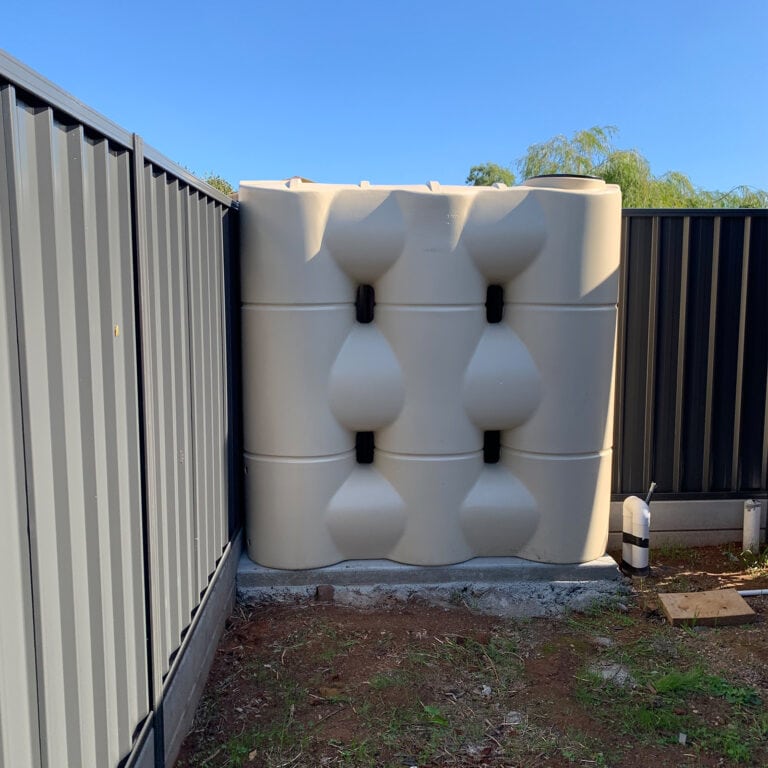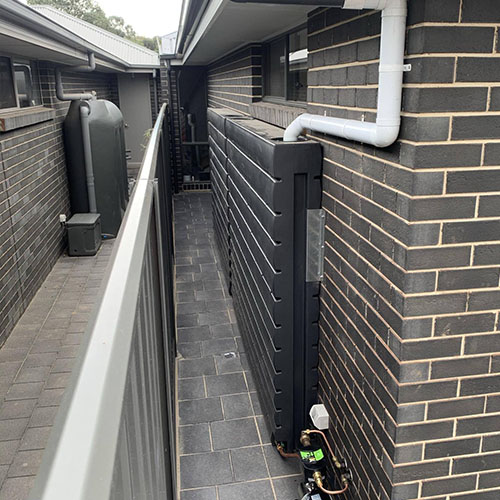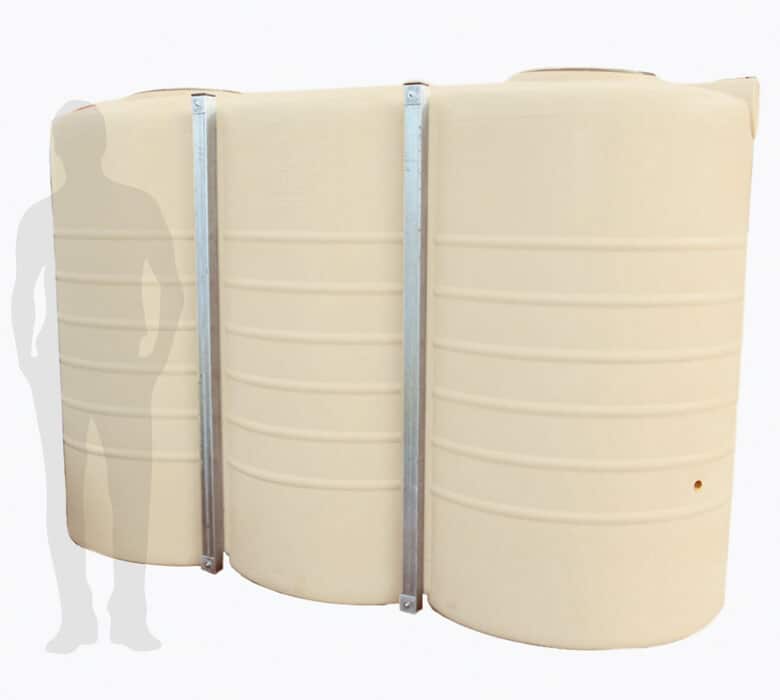Slimline Water Tanks: Space-Saving Solutions for Small Qualities
Slimline Water Tanks: Space-Saving Solutions for Small Qualities
Blog Article
Comprehending the Importance of Rainwater Tanks in Drought-Prone Regions for Water Security
In regions prone to extended droughts, the role of rainwater tanks in bolstering water safety and security is a topic of growing relevance. As areas come to grips with the difficulties of water deficiency, comprehending the significance of these containers exceeds simple collection of rainwater. Rain storage tanks function as an essential tool in reducing the influence of water lacks by offering a sustainable source of water for numerous demands. The real value of rain tanks prolongs much past simple storage space; it encompasses resilience-building measures and the promo of long-term water preservation techniques. This diverse approach to water safety warrants a closer examination of the function rain containers play in guaranteeing a dependable water supply during times of drought.
Advantages of Rain Containers
Making use of rain containers offers a lasting service for augmenting supply of water and improving water safety in property and commercial settings. Among the key advantages of rainwater storage tanks is their ability to reduce dependence on keys water supply. By recording and saving rain that falls on roofs, this alternative source can be used for different non-potable objectives such as irrigation, flushing bathrooms, and cleaning clothing. This not only conserves cured alcohol consumption water but also decreases water bills for customers.

Rainwater Harvesting Methods
Rainwater harvesting techniques encompass a range of approaches created to efficiently gather and save rainwater for numerous purposes, contributing to water conservation and sustainability. An additional prominent strategy is the use of above-ground or below ground storage containers to store rain for later use.

In addition, rain gardens and absorptive sidewalks are innovative strategies that involve landscaping or paving surfaces in a means that allows rainwater to percolate into the ground, restoring groundwater reserves. Furthermore, shape farming and terracing are farming techniques that help catch rain and prevent soil disintegration in sloping terrain. By executing these varied rainwater harvesting techniques, neighborhoods can boost water safety and strength in drought-prone regions while promoting sustainable water monitoring practices.
Value of Water Protection
Ensuring reputable accessibility to tidy and sufficient water resources is critical for maintaining human health, economic advancement, and ecological health. Water security is a vital aspect of societal durability, especially in areas at risk to droughts and water shortage. Appropriate water protection incorporates numerous measurements, consisting of availability, high quality, and access of water for domestic, farming, commercial, and environmental requirements.
Water security plays an important function in promoting public health and wellness by decreasing the occurrence of waterborne illness and ensuring cleanliness facilities. Financially, water protection is necessary for agricultural productivity, commercial operations, and overall financial growth. Slimline water tanks. Moreover, water protection is carefully linked to ecological sustainability, as it supports communities, biodiversity, and overall eco-friendly balance.
In drought-prone regions, water Continued safety becomes a lot more critical as a result of the enhanced risk my explanation of water scarcities. Implementing approaches like rainwater harvesting, water recycling, and effective water management methods can significantly improve water protection in these areas. By focusing on water protection, neighborhoods can much better withstand the effects of environment adjustment, population growth, and various other challenges that threaten water accessibility.
Enhancing Water Strength
With increasing worldwide water obstacles, constructing resilience in water systems has actually come to be an essential emphasis for lasting growth efforts. Enhancing water resilience includes carrying out approaches to ensure water accessibility and high quality despite transforming ecological conditions, such as droughts, floods, and pollution.
One secret element of boosting water strength is advertising making use of rainwater tanks in drought-prone regions - Slimline water tanks. Rainwater tanks act as an efficient ways of recording and saving rain for later use, decreasing dependence on limited freshwater resources throughout completely dry periods. By incorporating rainwater harvesting systems right into water monitoring strategies, neighborhoods can boost their capability to endure water deficiency and keep water safety and security

Sustainable Water Conservation
Amidst escalating water challenges, the prudent monitoring of water resources via sustainable blog conservation techniques is vital for guaranteeing long-lasting ecological security and societal health. Sustainable water preservation entails the reliable use water resources to satisfy present requirements without endangering the ability of future generations to fulfill their very own requirements. By executing approaches such as rain harvesting, greywater recycling, and water-efficient modern technologies, communities can minimize water waste and ease pressure on freshwater sources.
In addition, sustainable water conservation methods add to ecosystem health by keeping adequate water levels in rivers, lakes, and marshes, sustaining biodiversity, and maintaining all-natural habitats. These practices likewise play an important duty in alleviating the effects of environment change by helping to adapt to transforming rainfall patterns and water availability.

Conclusion
In verdict, rain storage tanks play a crucial duty in enhancing water safety and resilience in drought-prone regions. By making use of rainwater harvesting techniques, areas can reduce their reliance on standard water resources and promote lasting water preservation methods. This not just helps minimize the effects of water deficiency throughout droughts yet additionally contributes to lasting water safety and resilience in the face of environment modification challenges.
Report this page